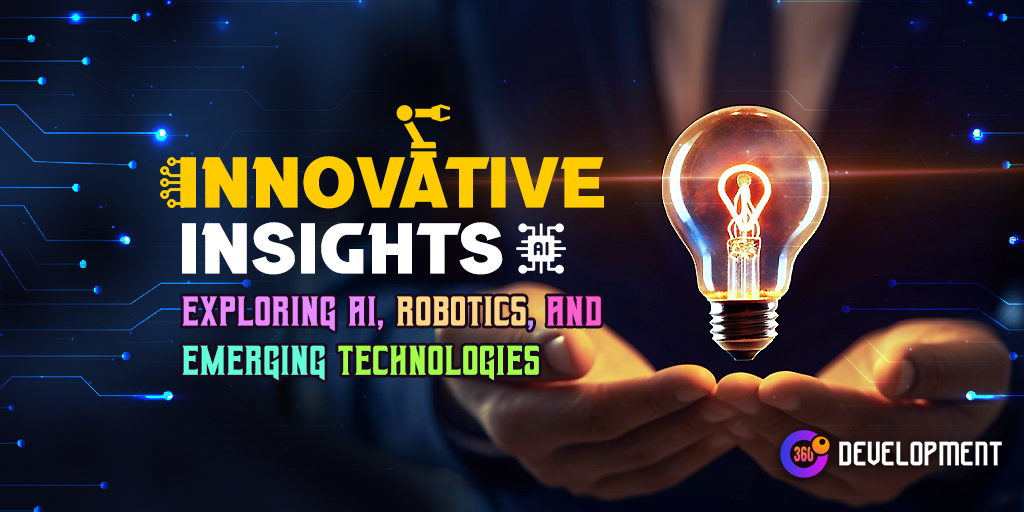Innovative Insights: Exploring AI, Robotics, and Emerging Technologies
In the modern era, the rapid advancement of technology has paved the way for exciting and innovative breakthroughs. Among these, artificial intelligence (AI), robotics, and emerging technologies stand out as key drivers of change. This article delves into the realms of AI, robotics, and emerging technologies, exploring their implications, applications, and future prospects.
Understanding Artificial Intelligence (AI)
Artificial Intelligence, or AI, refers to the development of intelligent machines that can perform tasks that typically require human intelligence. These tasks encompass a wide range of activities, including problem-solving, learning, and decision-making. AI is divided into two categories: narrow AI, which specializes in specific domains, and general AI, which possesses human-level intelligence.
The Rise of Robotics
Robotics has emerged as a prominent field within the realm of AI. Robots, the physical embodiments of AI, have evolved to mimic human actions and interact with their surroundings. From industrial robots streamlining manufacturing processes to companion robots assisting the elderly, the applications of robotics are vast and diverse.
Emerging Technologies and Their Impact
Emerging technologies, such as virtual reality (VR), augmented reality (AR), blockchain, and the Internet of Things (IoT), are transforming industries and societies. VR and AR offer immersive experiences in fields like gaming, education, and healthcare. Blockchain revolutionizes the way we secure and verify transactions, while the IoT connects devices and enables seamless communication between them.
AI and Robotics: The Synergy
The convergence of AI and robotics has led to groundbreaking advancements. Robots powered by AI algorithms exhibit enhanced decision-making capabilities, adaptability, and autonomy. Through machine learning and deep learning algorithms, robots can perceive their environment, learn from experience, and continuously improve their performance.
Applications of AI and Robotics
AI and robotics find applications across various sectors, revolutionizing industries and improving efficiency. In healthcare, robots assist surgeons during complex procedures and aid in patient care. Well, In agriculture, AI-powered drones monitor crops, optimize irrigation, and identify pests. In transportation, autonomous vehicles promise safer and more efficient journeys.
Ethical Considerations in AI and Robotics
As AI and robotics continue to evolve, ethical considerations become crucial. Questions surrounding data privacy, algorithmic biases, and the impact on employment need to be addressed. Ensuring transparency, accountability, and inclusivity in the development and deployment of AI and robotics is essential to mitigate potential risks.
Overcoming Challenges
The advancements in AI, robotics, and emerging technologies also come with challenges. Technical complexities, regulatory frameworks, and public acceptance are areas that require attention. Collaboration between researchers, policymakers, and industry leaders is necessary to overcome these obstacles and foster responsible and beneficial innovation.
The Future of AI, Robotics, and Emerging Technologies
The future holds immense possibilities for AI, robotics, and emerging technologies. The integration of these fields has the potential to revolutionize entire industries, drive economic growth, and improve the quality of life for individuals worldwide. As technology continues to evolve, we must embrace a proactive approach to harness its potential and navigate the changing landscape.
Conclusion
Innovation in AI, robotics, and emerging technologies is transforming the way we live, work, and interact. The synergy between AI and robotics opens new frontiers of exploration while emerging technologies reshape industries and societies. By addressing ethical concerns, overcoming challenges, and fostering collaboration, we can unlock the full potential of these transformative forces.
FAQs
- What is the difference between narrow AI and general AI? Narrow AI specializes in specific domains and tasks, while general AI possesses human-level intelligence and can perform a wide range of tasks.
- How are AI and robotics related? Robotics is a field within AI that focuses on creating physical embodiments of intelligent machines. AI algorithms power robots, enhancing their decision-making and adaptability.
- What are some applications of AI and robotics? AI and robotics find applications in healthcare, agriculture, transportation, manufacturing, and many other sectors, improving efficiency and enabling automation.
- What are the ethical considerations in AI and robotics? Ethical considerations include data privacy, algorithmic biases, and the impact on employment. Ensuring transparency and accountability is crucial to mitigate risks.
- What does the future hold for AI, robotics, and emerging technologies? The future promises revolutionary advancements, transforming industries, driving economic growth, and enhancing the quality of life globally.

